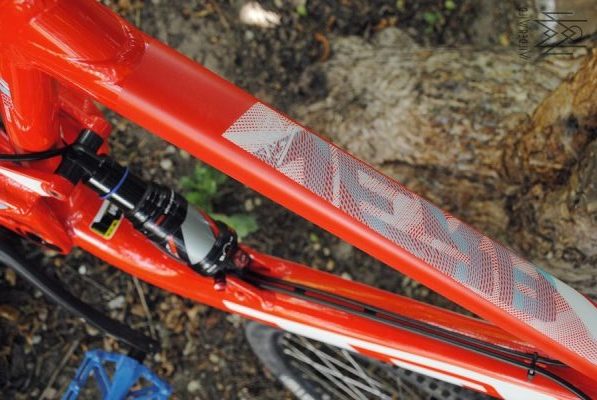Do you want to ensure a smooth and efficient ride on your bike? Look no further! In this article, we will guide you through the process of adjusting your bike’s gears. By mastering this skill, you can enhance your cycling experience and feel a sense of belonging among fellow riders.
Whether you’re a beginner or an experienced cyclist, understanding how to properly adjust your gears is essential. We will start by identifying common gear problems and equipping you with the necessary tools. We will walk you through adjusting both the rear and front derailleurs, ensuring optimal performance.

Identifying Gear Problems
If your bike’s gears aren’t shifting smoothly or making strange noises, it’s time to identify and fix the gear problems. Don’t worry, you’re not alone in this journey. Understanding and adjusting your bike’s gears will make your riding experience both smooth and enjoyable.
Start by checking if your gears are properly aligned. Look at the chain and make sure it’s running smoothly on the chainrings. If it’s not, you might need to adjust the front derailleur.
Next, shift through all the gears to see if they engage properly. If you experience any skipping or difficulty shifting, it might be an issue with the rear derailleur. You can adjust the tension of the derailleur using the barrel adjuster.
Additionally, check the cables and housing for any damage or fraying. Replace them if necessary. Remember to lubricate your gears regularly to prevent rust and ensure smooth shifting.
By identifying and addressing these gear problems, you’ll have a bike that performs like a dream, making you feel like a true member of the cycling community.
Basic Gear Adjustment Tools
Using basic gear adjustment tools, such as an Allen wrench and a screwdriver, you can easily fine-tune the shifting performance of your bicycle. For example, imagine you notice that your bike is having trouble shifting into the highest gear, so you use an Allen wrench to slightly tighten the limit screw, allowing for smoother and more accurate shifting. Adjusting your bike’s gears not only improves your overall riding experience but also gives you a sense of ownership and connection to your bike.
Here are three key benefits of using these tools to adjust your bike’s gears:
- Increased Efficiency: By fine-tuning the gear shifting, you’ll be able to find the perfect gear ratio for different terrains, making your pedaling much more efficient. This means you’ll be able to ride longer distances without getting tired as quickly.
- Improved Performance: Properly adjusted gears ensure that power is transferred smoothly from your legs to the pedals, resulting in a more responsive and powerful ride. You’ll feel a significant difference in your ability to accelerate and climb hills.
- Enhanced Durability: Regular gear adjustments prevent excessive wear and tear on the drivetrain components, extending their lifespan. By taking the time to make these adjustments, you’ll be contributing to the long-term durability of your bike.
By using these basic gear adjustment tools, you can fine-tune your bike’s shifting performance, experience a smoother ride, and enjoy the benefits of being a part of the cycling community.
Adjusting the Rear Derailleur
Get ready to step up your cycling game by mastering the art of tweaking the rear derailleur for smoother shifts and an overall better riding experience. Adjusting the rear derailleur is essential to ensure your bike’s gears are shifting properly. But don’t worry, it’s not as complicated as it may seem. All you need is a little patience and the right tools.
First, start by shifting your bike into the smallest rear gear. Then, locate the barrel adjuster, which is usually found where the cable enters the rear derailleur. Use your fingers to turn the barrel adjuster clockwise to tighten the cable tension or counterclockwise to loosen it. Make small adjustments and test the shifting after each one until you achieve smooth and precise shifts.
Next, check the indexing of your gears. This refers to the alignment of the gears with the derailleur. If you notice any hesitation or skipping when shifting, you may need to adjust the indexing. Use the barrel adjuster to fine-tune the alignment until the shifting is flawless.
Remember, mastering the art of adjusting the rear derailleur takes practice. Don’t be discouraged if it doesn’t feel perfect right away. Keep making small tweaks and soon you’ll be enjoying a smoother and more efficient ride. So go ahead, get out there and start tweaking those gears to maximize your cycling experience!
Fine-Tuning the Front Derailleur
Take your cycling game to the next level by fine-tuning the front derailleur for flawless and lightning-fast gear changes. Here are three simple steps to get you started:
- Step 1: Positioning – Begin by ensuring that the front derailleur is properly positioned. Make sure it’s parallel to the chainrings and just a few millimeters above the largest chainring teeth. This will ensure smooth and precise shifting.
- Step 2: Limit Screws – Next, locate the limit screws on the front derailleur. These screws control the movement range of the derailleur. Use a screwdriver to adjust them, ensuring that the chain shifts smoothly onto both the smallest and largest chainrings without rubbing against the derailleur cage.
- Step 3: Cable Tension – Finally, check the cable tension. Shift the chain onto the smallest chainring and ensure that there’s no slack in the cable. If there is, use the barrel adjuster to tighten it. Then, shift onto the largest chainring and make sure the chain doesn’t rub against the derailleur cage. If it does, loosen the cable tension slightly.
By following these steps, you’ll have a finely tuned front derailleur that’ll enhance your cycling experience and make your gear changes seamless. So go ahead, make these adjustments and enjoy the smoothest and most efficient rides of your life!
Testing and Fine-Tuning the Gears
Now that your front derailleur is fine-tuned, prepare to be amazed as you effortlessly glide through gears, experiencing the exhilarating sensation of pure cycling perfection. But before you hit the road, it’s important to test and fine-tune the gears to ensure a smooth and seamless ride.
To test the gears, start by pedaling your bike and shifting through all the gears. Pay attention to any skipping, grinding, or hesitation in the chain. If you notice any issues, it means your gears need further adjustment.
To fine-tune the gears, refer to the table below for a step-by-step guide:
| Gear Issue | Adjustment | Solution |
|---|---|---|
| Skipping gears | Cable tension adjustment | Increase or decrease tension by turning the barrel adjuster |
| Chain rubbing | Limit screw adjustment | Turn the limit screws to align the derailleur with the gears |
| Hesitation | Chain alignment | Check chain alignment and adjust as necessary |
| Chain noise | Chain lubrication | Apply lubricant to the chain to reduce friction |
| Gear misalignment | Derailleur adjustment | Use a barrel adjuster to align the derailleur with the gears |
By following these adjustments, you can fine-tune your bike’s gears and ensure a smooth and efficient ride. Remember, the key is to make small adjustments and test the gears after each adjustment to find the perfect balance. With a well-adjusted gear system, you’ll feel like a part of the cycling community, effortlessly gliding through the gears and enjoying every moment of your ride.
Frequently Asked Questions
How often should I adjust my bike’s gears?
You should adjust your bike’s gears whenever you notice any issues, such as skipping or difficulty shifting. Regular maintenance is important to ensure smooth and efficient gear changes, so don’t hesitate to make adjustments as needed.
What are the common signs of a worn-out gear cable?
Feeling frustrated with your bike’s gears? Listen up! When your gear cable starts acting up, watch out for signs like difficulty shifting, chain slipping, or a loose cable. It’s time for a replacement!
Can I use the same tools to adjust both the rear and front derailleurs?
Yes, you can use the same tools to adjust both the rear and front derailleurs. It makes it easier to have the necessary tools on hand for any adjustments you need to make.
How do I know if my bike’s gears are properly adjusted?
To know if your bike’s gears are properly adjusted, shift through all the gears and observe how smoothly and accurately they change. If the chain jumps or hesitates, it may need adjustment.
Are there any specific techniques for shifting gears smoothly?
Shift gears smoothly by imagining your bike as a graceful dancer. Feel the rhythm of the road and gently tap the shifters, allowing the gears to change seamlessly. Soon, you’ll be gliding effortlessly, feeling the sweet harmony of the ride.
Conclusion
Don’t let the fear of gear problems hold you back from enjoying a smooth and efficient ride. Remember, practice makes perfect, so don’t hesitate to fine-tune your front and rear derailleurs until you achieve optimal gear performance. If you’re worried about making a mistake, just remember that learning from mistakes is part of the process.





